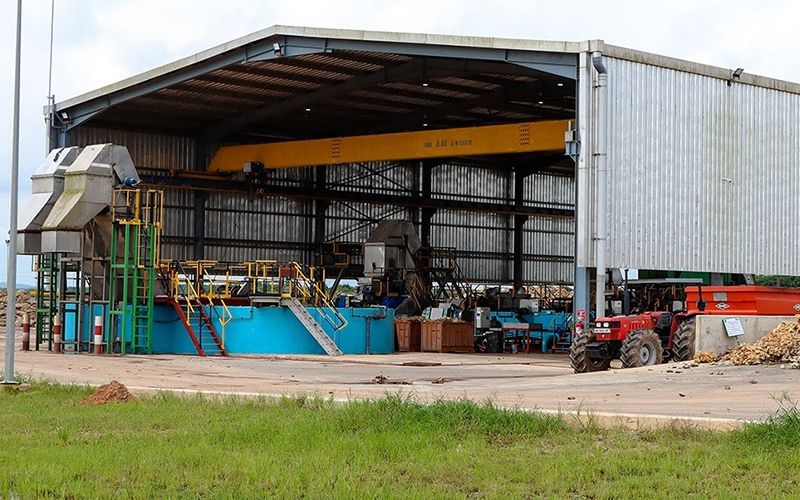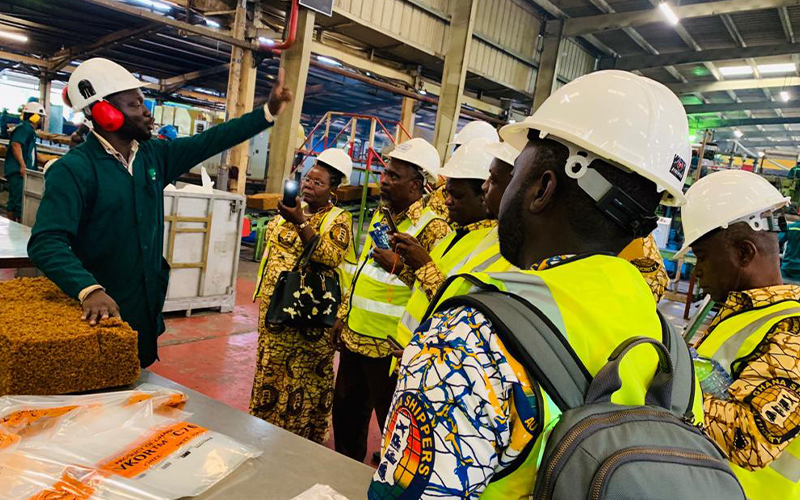Did you know that Ghana produces Natural Rubber? Did you also know that Ghana is one of the main suppliers of natural rubber to some renowned tyre manufacturing industries in the world? Yes, Ghana even has a robust rubber processing company that aids this.
In a visit to the Ghana Rubber Estates Ltd located in Takoradi, my team and I discovered that there are two manufacturing factories in that region; Apemenyim factory and Tsibu factory. Mr. Nortey, a representative from the Apemenyim Factory gave us a tour around the factory in order to allow us to have a feel of their day-to-day activities.
The factory’s operations start from the receiving of the raw materials also known as cup lumps. Its source of raw materials are from out grower plantations and industrial plantation.
It is however believed that, some out growers sometimes put external materials in the cup lumps in other to get heavier weight of the materials they provide to the factory. Mr Nortey vehemently stated that there have been precautionary measures put in place to curb such practices, as there is a quality assurance unit that does the inspection of the raw materials.
The rubber processing line is made up of two main sections; milling and drying. The milling section consists of several extraction units like the pre-breaking, slab cutting, creeping and shredding.
There’s a type of liquid in the cup lump called serum, which produces bad odour. Apparently, the odour from the cup lump is as a result of the proteins and carbohydrates in the rubber.
In the milling section, there’s a lot of washing in order to reduce the odour and the liquid in the cup lump. This implies that, they use a lot of water; around 15 tons per hour. In order not to waste Ghana’s resources and also cut down cost of production, they have adopted a water treatment system thus aerobic and anaerobic wastewater treatment to make it reusable again.



The last session at the milling unit is shredding; this cuts the rubber into finer pieces and immediately transferred to the pan feeding (filling station) section for drying of the rubber. Two methods are used for drying; electricity and gas (LPG) burning, and it takes about four (4) hours to dry the shredded rubber. The dried crumbs are referred to as cakes (end product). These are packaged into bales that weigh about 35 KG each.
There are three end products of the rubber produced from Ghana Rubber Estates Ltd; Premium, TSR (Technically Standard Rubber) 10 and TSR 20. The specifications of the rubber productions are based on client’s demand and it was also noted that most of their clients are outside Ghana. With the assistance of the laboratory in the factory, the production unit is able to produce the rubber that meet the standards of the international market. They export almost 99% of the product to the world market. The natural rubber is mostly used in making of aeroplane and car tyre.
They have an engineering unit and in-house workshop where they do fabricate some machines by themselves and constantly provide maintenance services to the processing equipment. There is a maintenance cycle for every two weeks, which takes two days to complete. The engineers are employed based on work experience and later train them on the job.
The Ghana Rubber Estates Ltd. requires a lot of human interactions, as the whole processing line is auto-manual and this has promoted a lot of employment in the Western part of Ghana and Ghana as a whole.
John Kwabena Fiagbedu

Business Development Executive
0509568044
john@tiastgroup.com


Comments are closed.